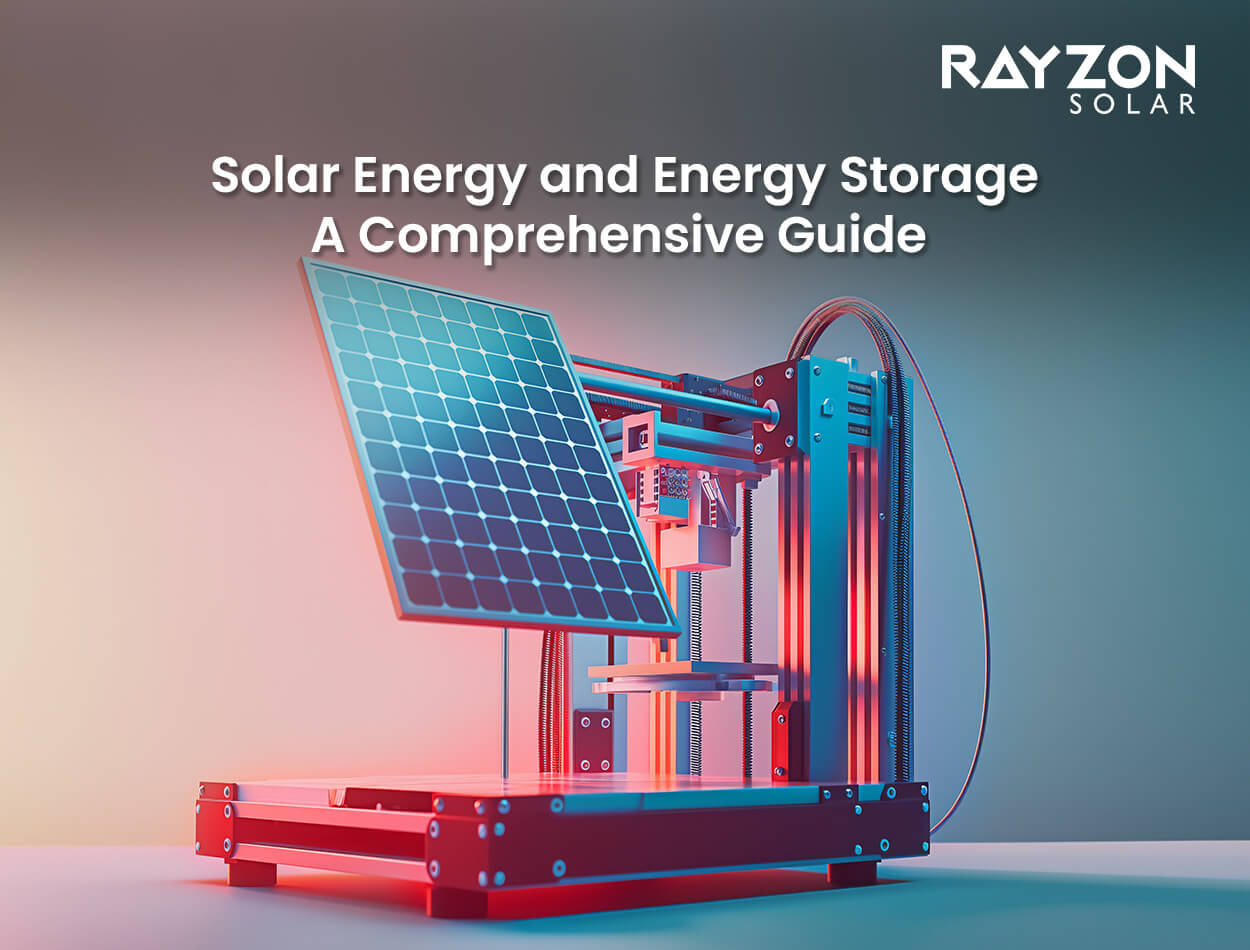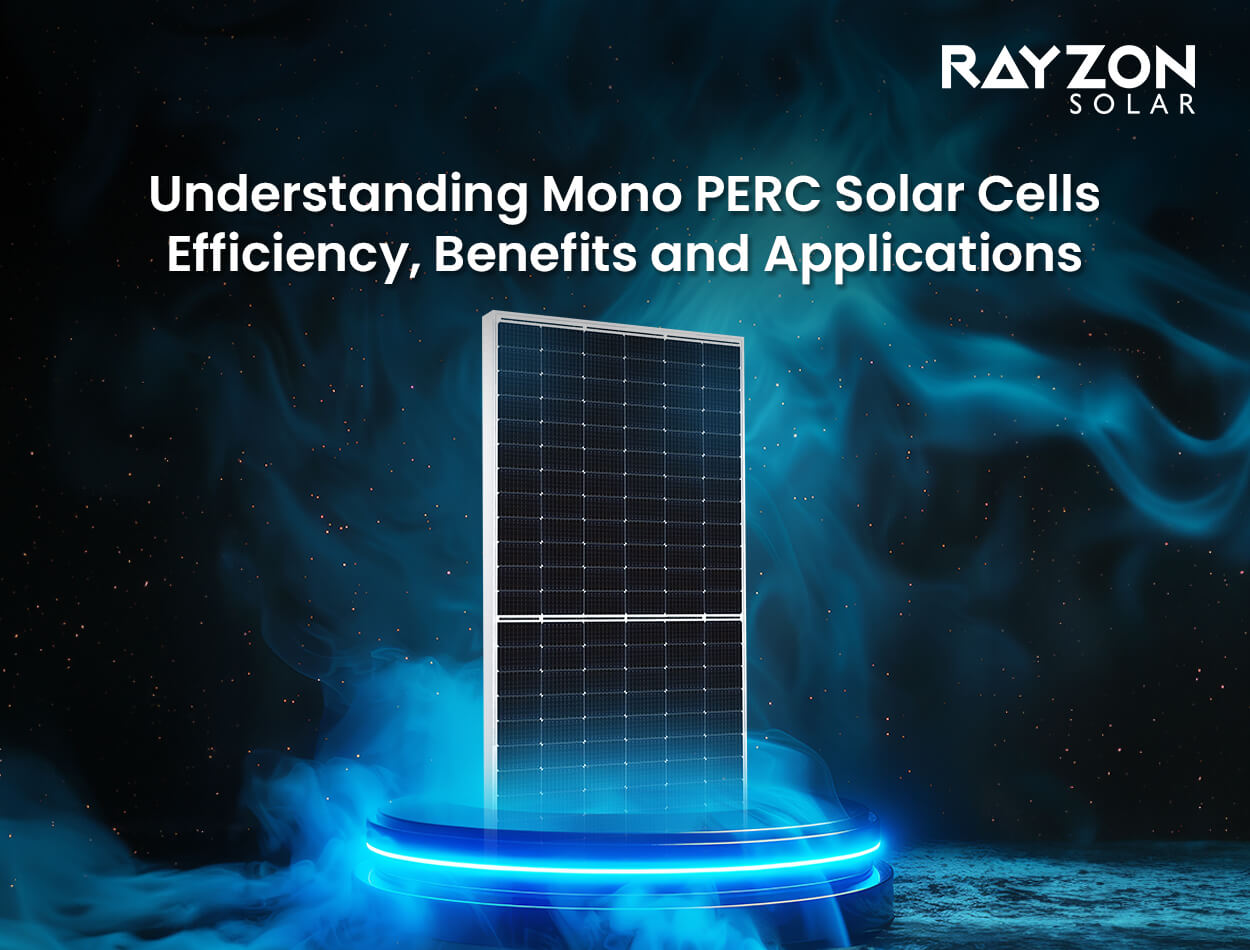
Solar Energy and Energy Storage: A Comprehensive Guide By Rayzon Solar
As the world shifts towards renewable energy sources, solar energy has emerged as a leading solution to combat climate change and reduce dependency on fossil fuels. Rayzon Solar, a top solar panel manufacturer, is at the forefront of this green revolution. However, maximizing the benefits of solar energy requires an effective energy storage system. This comprehensive guide explores the intricate relationship between solar energy and energy storage, highlighting their importance, benefits, and the role of the best solar companies in advancing these technologies.
Understanding Solar Energy
Solar energy is derived from the sun's rays through the utilization of photovoltaic (PV) cells housed in solar panels. These cells function by converting sunlight into electricity, thus offering a sustainable and eco-friendly source of power. Solar panels are strategically installed on rooftops, open expanses of land, or seamlessly integrated into building materials to effectively capture sunlight and convert it into electricity for the consumption of households, businesses, and entire communities.
The Need for Energy Storage
While solar energy is abundant during the day, its availability is intermittent, depending on weather conditions and daylight hours. Energy storage systems address this issue by storing excess energy generated during peak sunlight hours for use during cloudy periods or nighttime. This ensures a reliable and consistent power supply, making solar energy a more viable and stable option. For more information on how to increase solar power output on cloudy days, check out these expert tips from Rayzon Solar.Increase Solar Power Output on Cloudy Days: Expert Tips from Rayzon Solar
Types of Energy Storage Systems
As the world increasingly adopts renewable energy sources like solar power, the need for effective energy storage systems becomes more critical. These systems ensure a stable and reliable power supply, especially when solar energy generation is intermittent. In this guide, we explore the various types of energy storage systems that complement solar energy, helping users maximize efficiency and maintain a consistent energy supply. Among the key players in this field, Rayzon Solar, a top solar panel manufacturer, continues to innovate and enhance energy storage solutions to support renewable energy integration.
1. Battery Storage Systems
Battery storage is the most common and adaptable form of energy storage. Batteries store electrical energy chemically and can discharge it when needed. The most widely used batteries in solar energy storage are lithium-ion batteries, known for their high energy density, long lifespan, and decreasing costs. These batteries are ideal for both residential and commercial applications due to their efficiency and scalability.
Key Benefits:
High Energy Density: Lithium-ion batteries can store a significant amount of energy in a relatively small space.
Longevity: These batteries have a long cycle life, making them cost-effective over time.
Efficiency: High charge and discharge efficiency, meaning less energy loss during storage.
2. Pumped Hydro Storage
Pumped hydro storage is one of the oldest and most established energy storage technologies. This system uses excess solar energy to pump water from a lower reservoir to a higher one. When energy is needed, the water is released back down through turbines to generate electricity. This method is highly efficient and capable of storing large amounts of energy.
Key Benefits:
Large Capacity: Can store vast amounts of energy, suitable for grid-scale storage.
Long Duration: Capable of providing energy for extended periods, making it ideal for balancing daily and seasonal energy fluctuations.
Reliability: Proven and mature technology with high operational reliability.
3. Thermal Energy Storage
Thermal energy storage involves storing excess solar energy as heat, which can later be converted back into electricity or used directly for heating and cooling applications. Common methods include using molten salt or water as the storage medium. This type of storage is particularly useful for large-scale solar power plants.
Key Benefits:
Cost-Effective: Often cheaper than battery storage for large-scale applications.
Efficiency: High efficiency in storing and retrieving thermal energy.
Versatility: This can be used for both electricity generation and direct thermal applications.
4. Flywheel Energy Storage
Flywheel energy storage systems store energy in the form of rotational kinetic energy. A flywheel accelerates to a high speed, storing energy as kinetic energy. When energy is needed, the flywheel slows down, converting the kinetic energy back into electrical energy. Flywheels are known for their rapid response times and long lifespan.
Key Benefits:
Fast Response: Quick to absorb and release energy, ideal for stabilizing power grids.
Durability: Long operational life with minimal maintenance.
Efficiency: High round-trip efficiency, with low energy loss during storage and retrieval.
5. Compressed Air Energy Storage (CAES)
CAES systems store energy by compressing air and storing it in underground caverns or containers. When energy is needed, the compressed air is released and heated to drive turbines that generate electricity. This method is suitable for large-scale energy storage and can provide a long-duration energy supply.
Key Benefits:
Scalability: Capable of storing large amounts of energy.
Long Duration: Provides energy over extended periods.
Integration: Can be integrated with other renewable energy sources for a more stable supply.
The integration of effective energy storage systems is essential for maximizing the potential of solar energy. Top solar panel manufacturers like Rayzon Solar are leading the way in developing and deploying advanced energy storage solutions that enhance the reliability and efficiency of renewable energy. Whether through battery storage, pumped hydro, thermal storage, flywheels, or compressed air, each type of energy storage system plays a crucial role in creating a sustainable and resilient energy future. By understanding and leveraging these technologies, we can ensure a steady and reliable power supply, even when the sun isn't shining.
Benefits of Combining Solar Energy and Energy Storage
Enhanced Reliability and Stability
Combining solar energy with energy storage systems ensures a consistent power supply, even during periods of low sunlight or high demand. This reliability is crucial for both residential and commercial users, reducing dependency on the grid and enhancing energy security.
Cost Savings
Energy storage allows users to store excess energy and use it during peak hours when electricity rates are higher. This can lead to significant cost savings on energy bills. Additionally, with advancements in technology and economies of scale, the cost of energy storage systems is decreasing, making them more accessible to a broader range of consumers.
Grid Independence
For remote areas or regions with unreliable grid infrastructure, combining solar energy with energy storage can provide a self-sufficient power supply. This independence is especially beneficial for rural communities and off-grid applications, ensuring access to electricity without the need for extensive grid infrastructure.
In Conclusion,Solar energy and energy storage are integral components of a sustainable and resilient energy system. As we strive to reduce our carbon footprint and combat climate change, the synergy between these technologies will be crucial. Top solar panel manufacturers Rayzon Solar are driving innovation, making solar energy more efficient and accessible. By integrating energy storage systems, we can overcome the intermittency of solar power, ensuring a reliable, cost-effective, and environmentally friendly energy supply.
The journey toward a sustainable future is a collective effort that involves technological advancements, supportive policies, and proactive participation from consumers and businesses. Embracing solar energy and energy storage is a significant step in this direction, paving the way for a cleaner, greener, and more resilient world.
You Can Also Read This:- Top Solar Technology Trends of 2024



